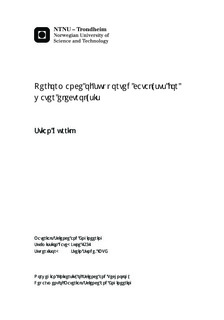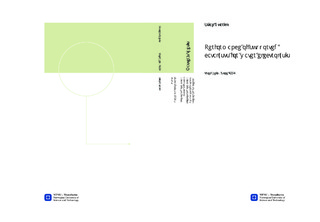| dc.description.abstract | The most active catalyst for oxygen evolution in PEM water electrolysis is ruthenium oxide. Its major drawback as a commercial catalyst is its poor stability. In a mixed oxide with iridium, ruthenium becomes more stable. However, it would be favorable to find a less expensive substitute to iridium. In this work, the dissolution potential and lifetime of mixed oxides containing ruthenium and tantalum are investigated. In order to effectively determine what effects tantalum and particle size have on stability, only a small amount of tantalum is used, and the catalysts are supported by antimony doped tin oxide, ATO. This leads to a very small particle size, and makes it possible to investigate small amounts of catalyst where little new surface is made available during degradation.Catalysts were prepared with the normal polyol method by reducing RuCl3 and TaCl5 in ethylene glycol, EG, before the metal particles were deposited on the ATO support. The catalysts were investigated electrochemically with cyclic and linear voltammetry. Furthermore, the lifetime of four catalysts were determined by chronoamperometry at 1.455V vs. RHE. The compositions and loading of catalyst on the support were determined by energy dispersive x-ray spectroscopy (EDS) and the particle sizes were measured with transmission electron microscopy (TEM).In one synthesis, the reduction time and temperature were increased from 3 hours at 170◦C to 4 hours at 190◦C in order to increase the reduction rate. While this had no effect on the Ta composition, the catalyst got a fraction of amorphous phase not found in any of the other catalysts. The amorphous Ru0.9Ta0.1O2 particles had the largest particle size and the highest stability of the ones investigated. 10wt% water was added to the synthesis of an ATO-RuO2 catalyst in order to increase the particle size, but no significant effect was observed. Larger RuO2 particles and amorphous Ru0.9Ta0.1O2 particles were obtained by collecting them as unsupported catalysts.The addition of tantalum has a negative effect on the catalytic activity. When Ta is present, the dissolution potential of Ru at around 1.45V is slightly increased, but the degradation rate is increased above 1.49V. A large particle size in RuO2 has a significant positive effect on stability. | nb_NO |

